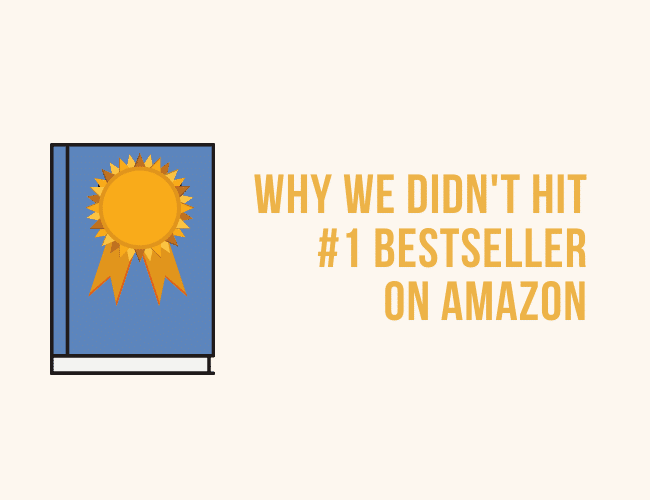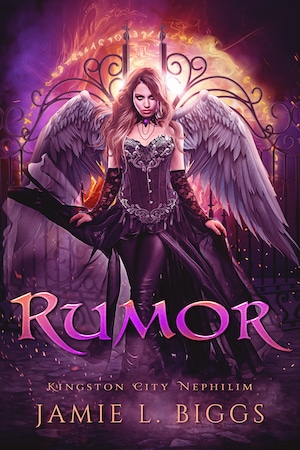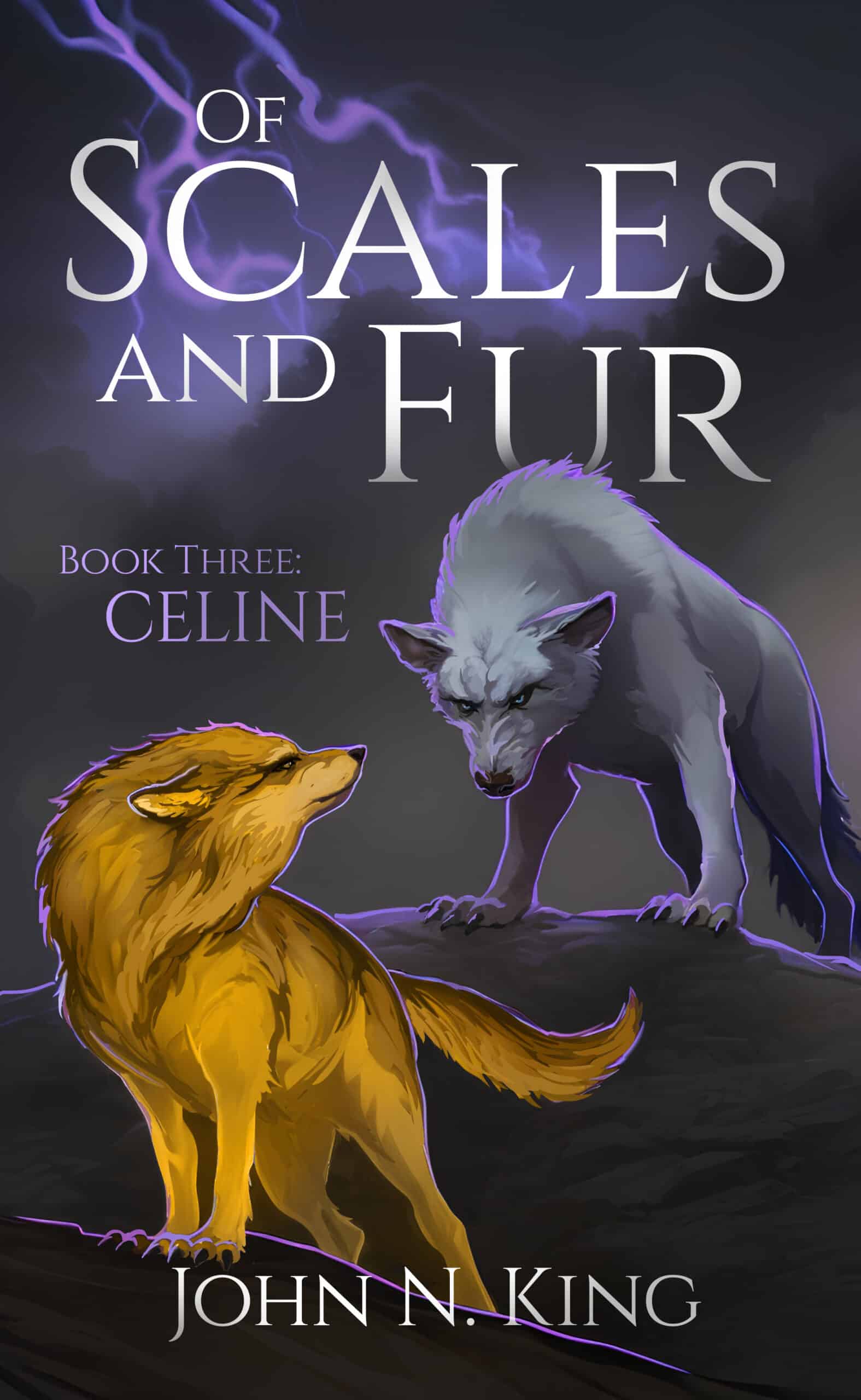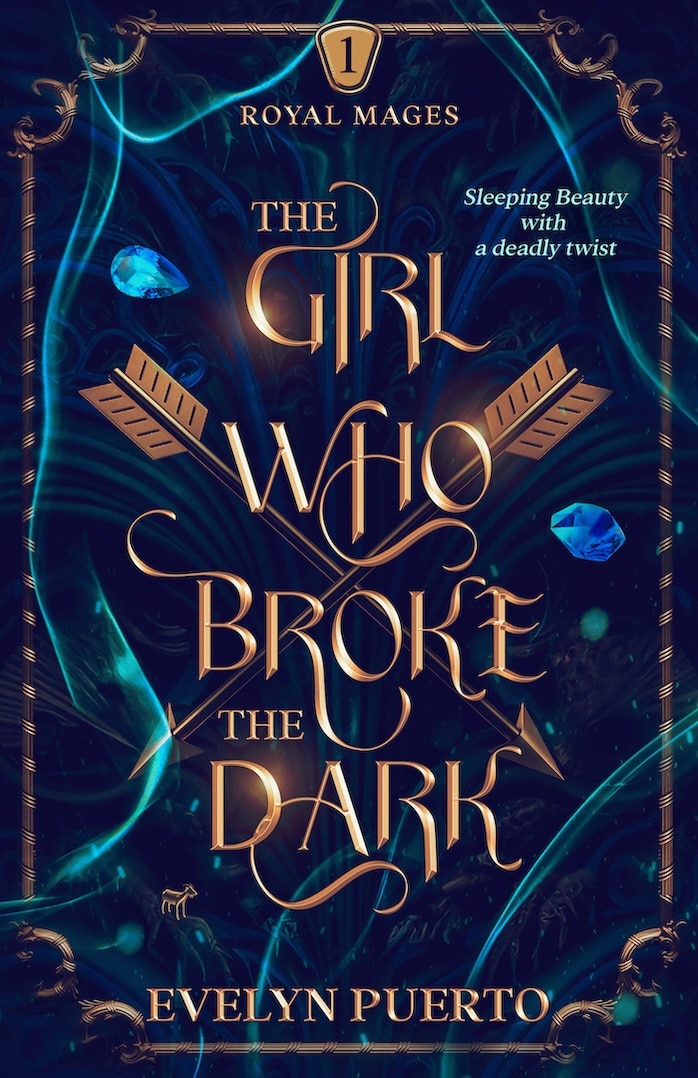A short time ago, it was our goal to get Sarah Gribble’s debut novel, Surviving Death, into the #1 bestselling spot in its category on Amazon. We worked hard for it, came so close, and just narrowly missed. In this post, I want to share what we did to get so close and why we missed, and talk about whether it really matters.

At the end, I’d love to hear your thoughts on what we did, and any ideas on what we could have done differently to better reach #1.

So close! 😫
Do Bestseller Tags Matter?
Before we talk about how we got so close and why we missed, you might be wondering, does it really matter?
What difference do bestseller labels really make? And is it really something to work so hard on?
First, let’s acknowledge that just because a book becomes a bestseller, it doesn’t mean it’s any good. Quality and sales numbers are not synonymous, and while there is probably some kind of connection between sales and how good a book is, we’ve all seen bad books make the bestseller list.
At The Write Practice, we of course care deeply about helping authors write great books. But we also care about helping authors make those books successful and, at a broader level, helping them thrive in their careers as writers.
From that perspective, it’s undeniable that having a bestseller label next to a book grants you more authority, helps sales of your book, and boosts your career as a whole.
Furthermore, the bestseller tag helps you sell more books, acting as social proof and also working on Amazon and other booksellers’ algorithms to refer your book to more readers.
Personally, books that I’ve written or consulted for have hit the Wall Street Journal bestseller list, the USA Today bestseller list, and the Amazon bestseller list. Each time, sales have spiked as a result.
So does becoming a bestseller matter? Qualitatively, no. But in terms of sales and an author’s career, absolutely.
And in this case, Sarah is an author we believe in, who we know is a very good writer, and who has written such a great book, so we wanted to help her hit the list.
How Many Books Do You Need to Sell Hit the Bestseller List?
The short answer is: it depends.
To be the best seller, you just have to sell more copies than any other book in the category.
To determine this, we used Publisher Rocket, a piece of software for writers and publishers that helps you get sales and discovery data from Amazon.

Sarah Gribble’s novel plays with the idea of Dante’s Divine Comedy, and weaves traditional gods and divine beings from several cultures into the mix, including the Lucifer, the Valkyries, and Death himself.
Since the book deals with myths and legends, we placed it in the Myths & Legends category, both into the Norse & Viking and Greek & Roman subcategories, as you can see in the screenshot above.
Several of these categories were quite competitive—like the Dark Fantasy category, which takes 1,591 sales in a day to hit the top spot—but there were a few that were more winnable.
In the screenshot above you can see that in the Norse & Viking Myths & Legends category, the top book sold 113 books in one day.
Knowing this is extremely useful, because now we have a target for how many sales we need to get to reach #1.
It’s worth noting, some of these categories are more helpful for further sales than others. It’s unlikely many readers are camping out on the Norse & Viking Myths & and Legends bestsellers list, just waiting to find their next favorite book (but I could be wrong about that!).
Even so, becoming a bestseller in some of these niche categories can help you rise up into the more lucrative categories, like Dark Fantasy.
What We Did to Try to Hit the Bestseller List
There are two reliable times to hit the bestseller list: during a book’s launch and during a discount promotion.
Most traditionally published books and many indie books hit a bestseller list during the week after their launch. That’s why launching well is so important.
Many indie books, on the other hand, have hit lists, even big lists like the NY Times Bestseller List or USA Today Bestseller List, during discount promotions, often with several different authors promoting their books together.
For Sarah’s book, we have plans to do promotions later on, once the book has gotten over 100 reviews. But we also wanted to have a strong launch.
Here are some of the things we did to make that happen:
- Launch team. In the months before the publication date, we built a launch team of over 200 readers (most from this community—thanks for your help!). These readers agreed to share the book in the week of the launch and leave a review.
- Testimonial blurbs. We asked prominent authors in our community to read the book and write a one- or two-sentence review of the book, which we placed in the editorial section. These testimonials are shown to improve on-page conversion rate (meaning more people who land on the page purchase).
- Partnerships. We asked partners in our space, like Stephanie Ellis at Horror Tree, to share about the book during the launch.
- Discounted price during launch window. During the week of launch we lowered the price of the eBook version of Surviving Death to $2.99 to make it easy for people to purchase the book right away. When the launch window was over, the price would go back to $5.99, which created an extra level of urgency to encourage people to purchase the book quickly.
- Launch window incentives. In addition to the discount, we offered several “prizes” for purchasing the book during the launch window. Readers could forward their receipt to a special email address that would give them access to a free novella by Sarah, plus a chance to win prizes like keychains, bookmarks, stickers, and a copy of the audiobook, more than $600 in prizes in all.
- Personal promotion. Sarah and I, along with the rest of our team, promoted the book to our personal social media channels. We even gifted the book to several friends we thought might enjoy it.
- Author promotion. Sarah had built a community of hundreds of readers by publishing short stories in literary magazines and posting articles here on The Write Practice. During the launch week, she sent several emails to her list to tell them about the book, talk about the prizes, and ask them to purchase during the launch window.
- Platform promotion. We also sent three emails to our list at The Write Practice asking readers to check out the book.
Did These Promotions Work?
After just a few days, Surviving Death became a #1 New Release on Amazon. This gave it a featured spot in several categories, which was helpful!
During the launch window, we sold over 500 copies of Surviving Death. 307 of those sales came on the final day.
That’s right, 307, which according to Publisher Rocket should have easily been enough to hit #1 in several categories.

So, what happened? Shouldn’t we have become a #1 bestseller?
That’s exactly what we were asking late Wednesday night. But even as we were climbing the ranks of Amazon, we never reached the #1 spot. We came very close, but in category after category, it seemed like there was always a book ahead of us.

In fact, in the Norse & Viking Myths & Legends category, a book that hadn’t even been in the top ten shot ahead us, reaching #1 with an Amazon Best Sellers Rank of #250, over 400 spots higher than us.
Apparently this book, which came out just a few days after us, was part of a nine-book series by a more established author who was able to reach the list much more easily than Sarah, a comparatively newer author.
And this is the hard part of chasing the bestseller list: it’s a moving target, one that can change daily based on the other books that are being released at the same time.
What’s Next?
Now that the launch window is over, there are still things we can do to become a number one bestseller.
As I mentioned, there are two main ways to become a bestseller. The first is during the launch window, but the other is through a discount promotion in partnership with a book promotion site, like Bookbub.
To be selected by Bookbub, though, your book needs to have a lot of reviews. So our next step is to get more book reviews. Currently Surviving Death has 31 reviews. Over the next few months, our goal is to get over 100 reviews.
How do we do that?
By asking for help!
So if you purchased Surviving Death, would you do us a huge favor and leave a review? We need your help! Reviews make a difference!
You can leave a review here.
The Big Lesson After Not Hitting the Bestseller List
You can control only what you can control.
You can choose when you release your book, how you communicate your launch, how much work you do, how many people you talk to, how generous you are, and how early you start to build relationships so that when you’re ready to launch they want to help.
You can’t choose if another author in your space decides to publish their book during the same window. You can’t control how many books they sell, and if they sell more copies than you.
So the lesson is this: focus on what you can control.
And don’t stop writing, because while launching your book well is important, the most important thing is to launch your next book.
After we finished debriefing her launch, Sarah took the rest of the day off to edit her next book. That’s the mentality of a writer who is going to hit many bestseller lists.
What questions do you have about our launch experience? Do you have any feedback about what we should have done differently? Let us know in the comments.
PRACTICE
At The Write Practice, we believe authors are successful when they do two things:
- Be generous. Be generous with readers to build life-long relationships with readers. Be generous with other authors to build a cartel, a group of competitors who work together for their common good. Generosity is the best way to become a successful author.
- Ask for help. After you're generous, you have to ask for help. We all need help, whether that looks like getting feedback on your writing, having people join your launch team, getting people to buy your book, or even getting reviews. To do that, you have to ask!
It’s easier to ask for help after you’ve been generous.
So for your practice today, do something generous for another writer. Maybe it’s giving feedback on someone’s practice on another post on The Write Practice. Maybe it’s reviewing another author’s book on your blog.
I believe generosity always comes back to us (and even if it doesn’t, it’s still worth doing!), so do something generous today.
That’s all for today. Happy writing!
Joe Bunting is an author and the leader of The Write Practice community. He is also the author of the new book Crowdsourcing Paris, a real life adventure story set in France. It was a #1 New Release on Amazon. Follow him on Instagram (@jhbunting).
Want best-seller coaching? Book Joe here.



0 Comments